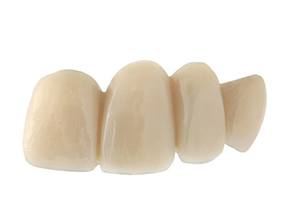Restorative Dentistry – East Longmeadow, MA
Complete Care to Keep You Smiling
At EMA Dental, our skilled dentistry team is dedicated to helping patients keep their smiles whole, healthy, and beautiful for a lifetime. Even with diligent daily care at home and regular dental appointments twice a year, you may experience tooth damage or decay that needs to be repaired by a dentist. Our East Longmeadow dentist and dental care team offer a wide range of restorative dentistry services to help you fully restore your smile’s healthy function and flawless appearance. If you want to learn more about our restorative dentistry services, call EMA Dental in East Longmeadow to schedule an appointment.
Tooth-Colored Fillings

For small cavities, chips, and cracks, a filling will be recommended to repair your smile. We use a natural-looking, tooth-colored composite resin material to replace lost tooth structure and restore your smile’s full function. The entire process is completed in a single appointment. We remove any damaged tissues. We apply an etchant material that will be used to create a more porous surface. Then, the putty-like resin is placed directly onto the prepared structure where it seeps into the pits and grooves, fusing seamlessly. A curing light is used to harden the composite resin into position.
Learn More About Tooth-Colored Fillings
Dental Crowns

For more serious dental damage or decay, we use a dental crown. Sometimes called a cap, these restorations are crafted to fit completely over the top of a damaged tooth to replace lost dental structure and protect remaining healthy teeth. Dental crowns are also used to support fixed bridge restorations.
Learn More About Dental Crowns
Dental Bridges

A fixed bridge or dental bridge is a tooth replacement prosthetic used to restore one or more consecutive lost teeth. The replacement tooth or teeth are fused to dental crowns, one on each side. Then, the crowns are anchored to healthy remaining teeth, seamlessly recreating the lost tooth structures.
Learn More About Dental Bridges
Partial Dentures

Patients with numerous consecutive and nonconsecutive missing teeth will need to receive a partial denture. Partials use a gum-colored base to support a number of replacement teeth. The denture base is crafted to fit between remaining teeth, and clasps are used to attach the partial to remaining oral structures to recreate your smile.
Full Dentures

To restore an entire row of missing teeth, we will craft a full denture. These restorations do not have healthy teeth to provide support, so instead, the denture base is molded to fit against the gums. The snug fit between the denture and gums creates suction that holds your prosthetic in place. Some people prefer to use a small amount of denture adhesive to improve the stability of the prosthetic.
Root Canal Therapy

If you’re experiencing a severe toothache or lingering dental sensitivity, it may be time to visit our office for root canal therapy. This treatment is necessary when decay or damage reaches the interior layer of the tooth (called the pulp) where the nerve system is housed. When damage accesses the nerve, it causes the severe pain and sensitivity that indicates a need for root canal therapy. This procedure is performed by drilling into the pulp layer of the tooth. Then, we remove the nerve and pulp tissue. The tooth is refilled with a biocompatible substance, and the access hole is sealed. In most cases, we also place a crown to protect and strengthen the remaining tooth structure.
Learn More About Root Canal Therapy
Tooth Extractions

If there’s no way to save your tooth and preserve your oral health, we’ll recommend tooth extraction. For fully erupted teeth, we can usually pull them. Pulling teeth requires us to numb the area. Then, we use tools to hold the tooth and shift it until it can break free from the socket. If we’re not able to pull the tooth, we can surgically remove it. Surgical extractions are more invasive, but our skilled dentists can perform these treatments quickly and comfortably.
